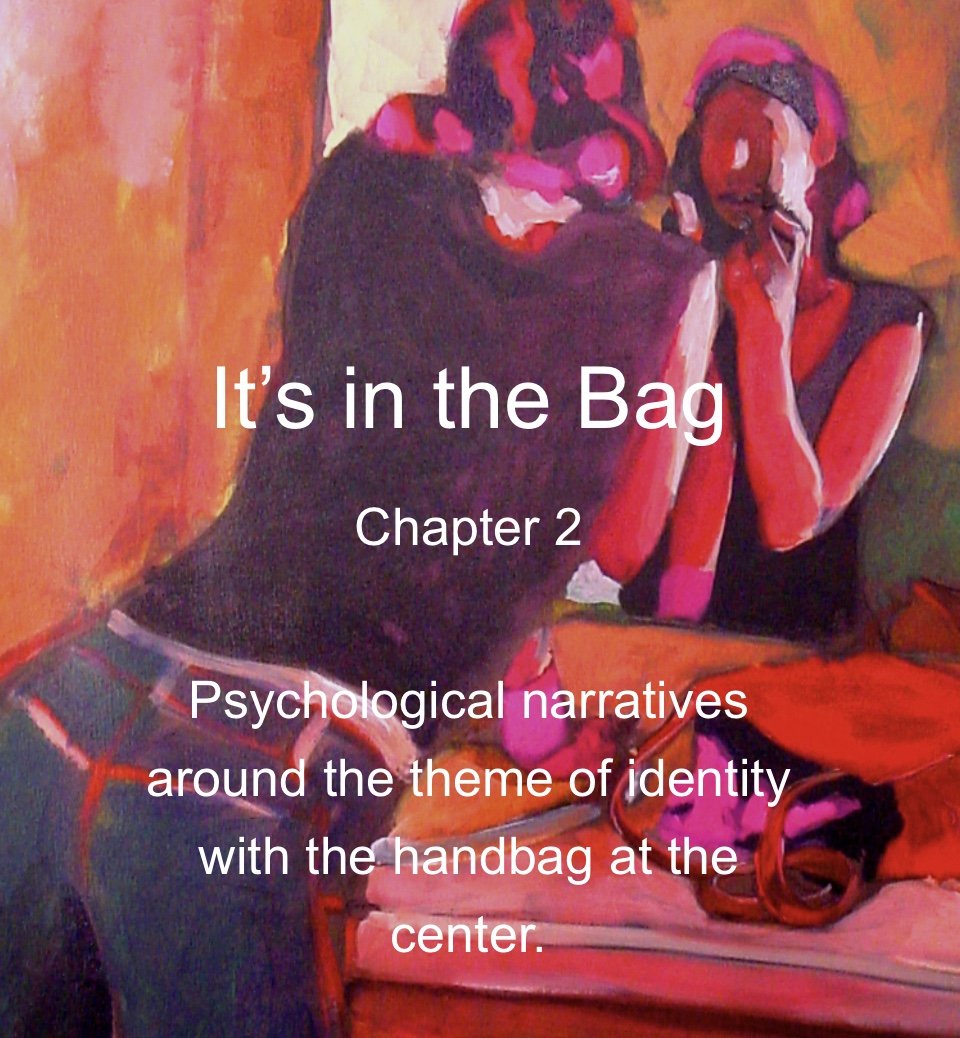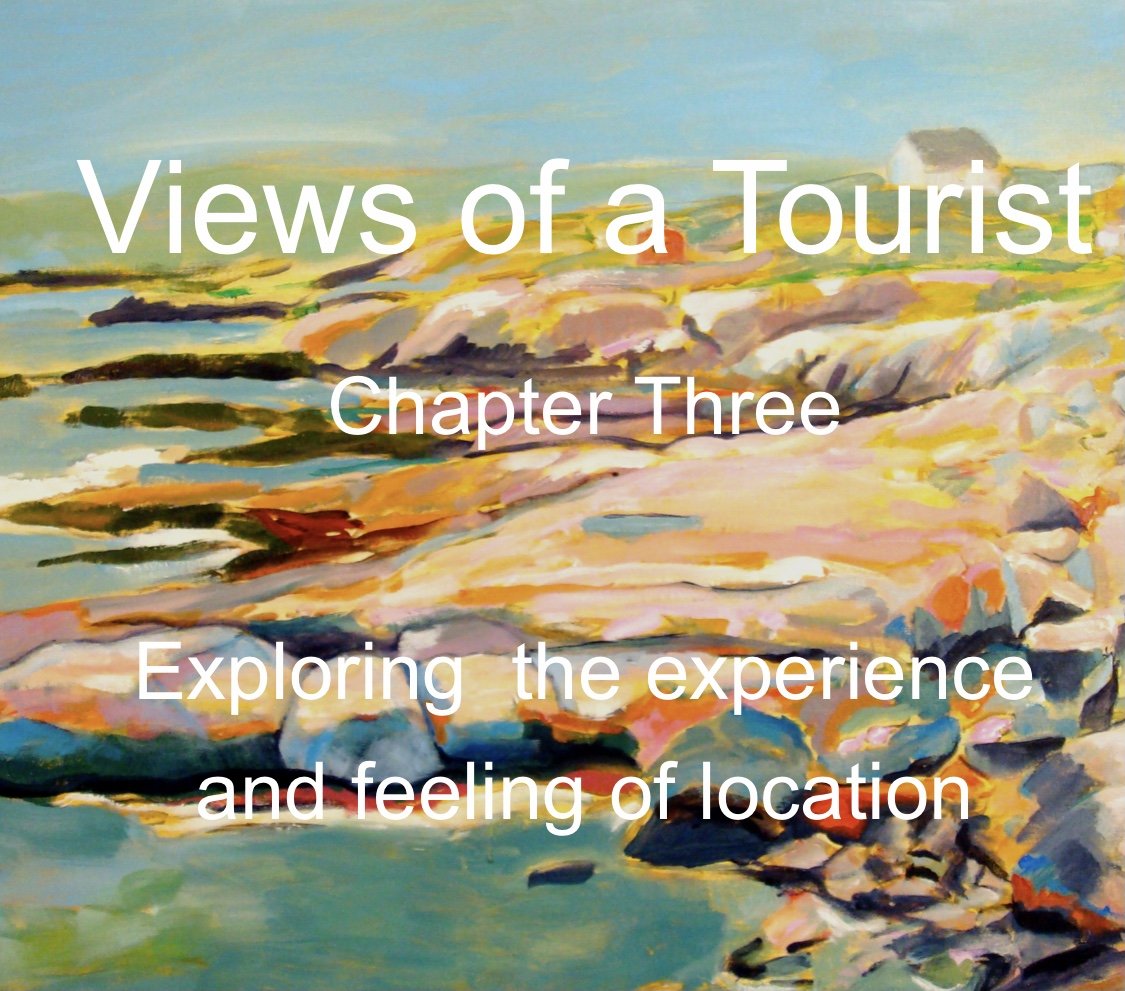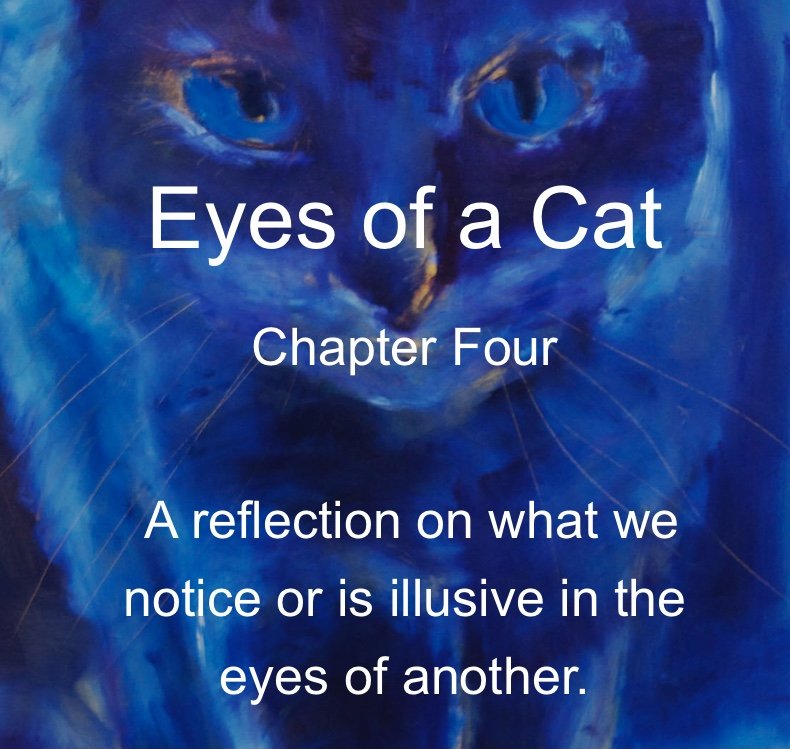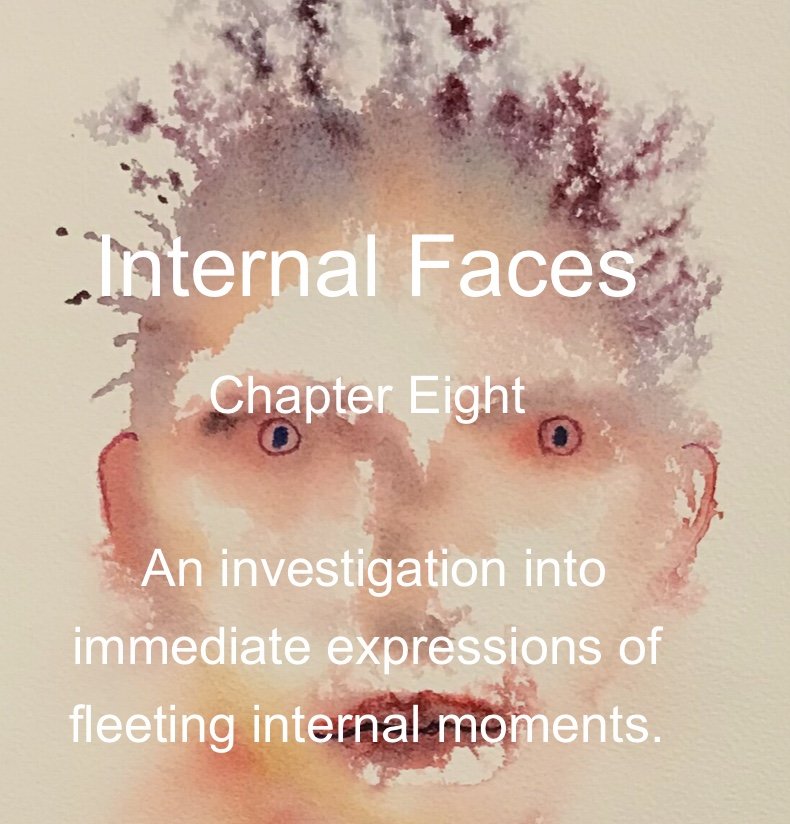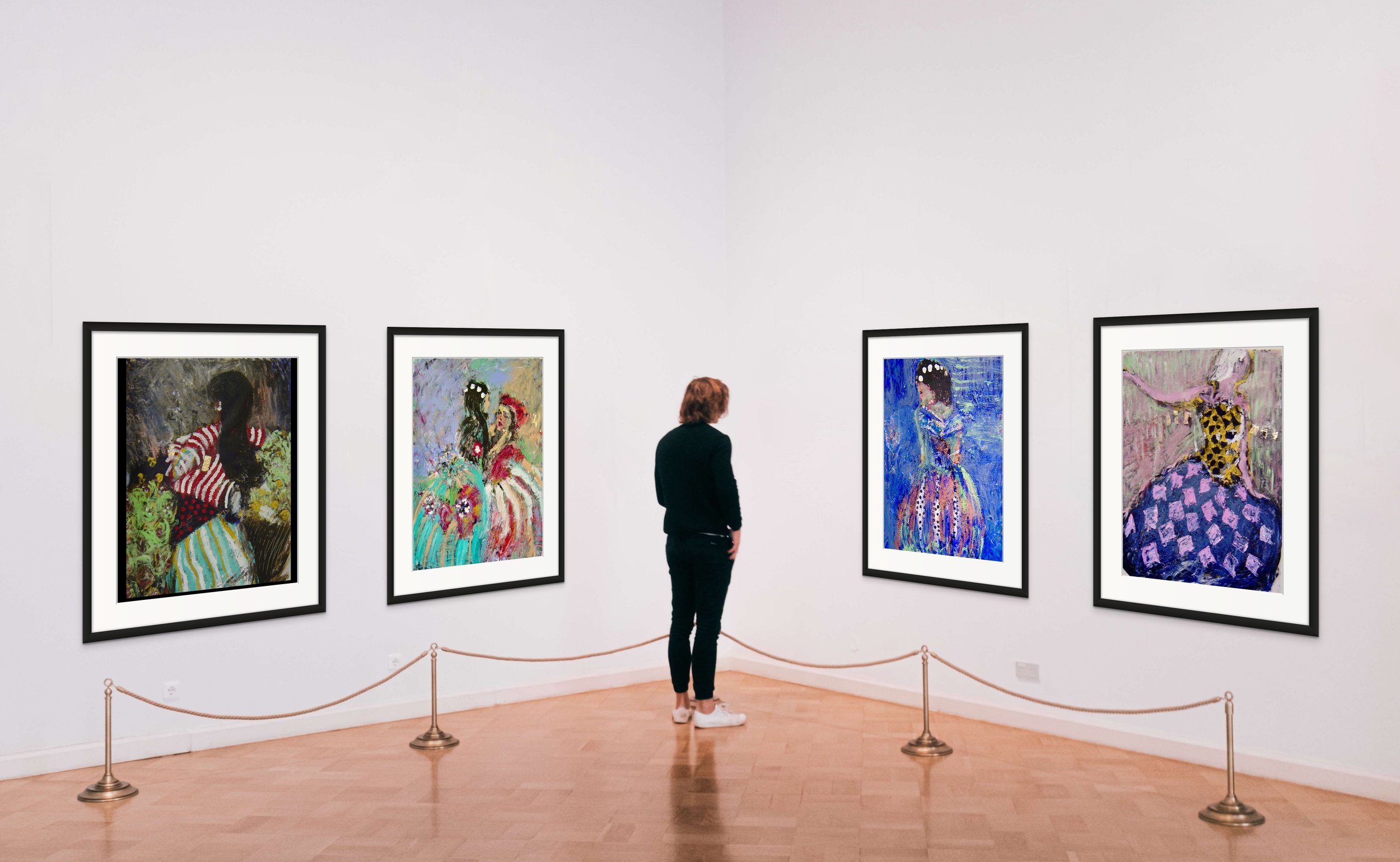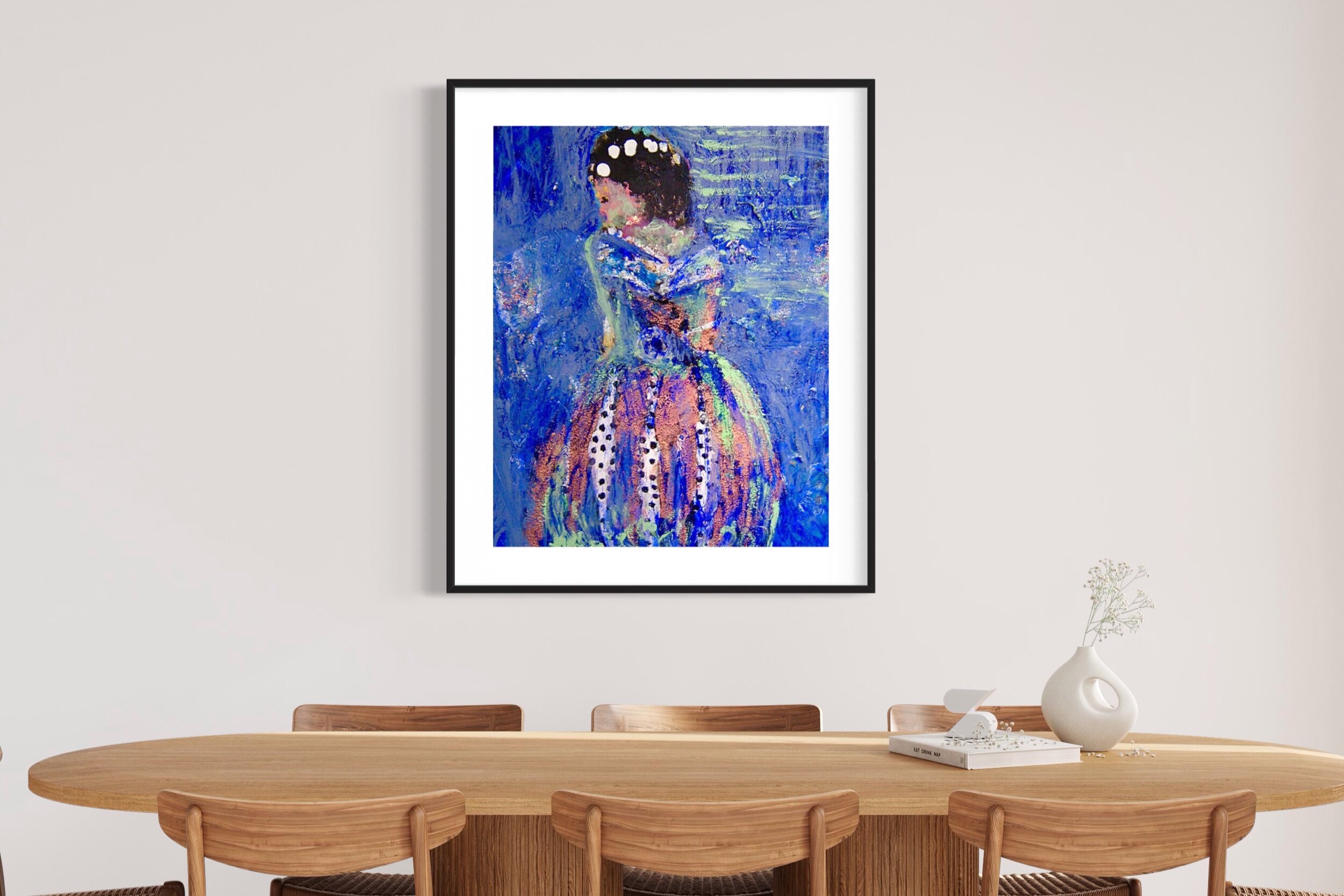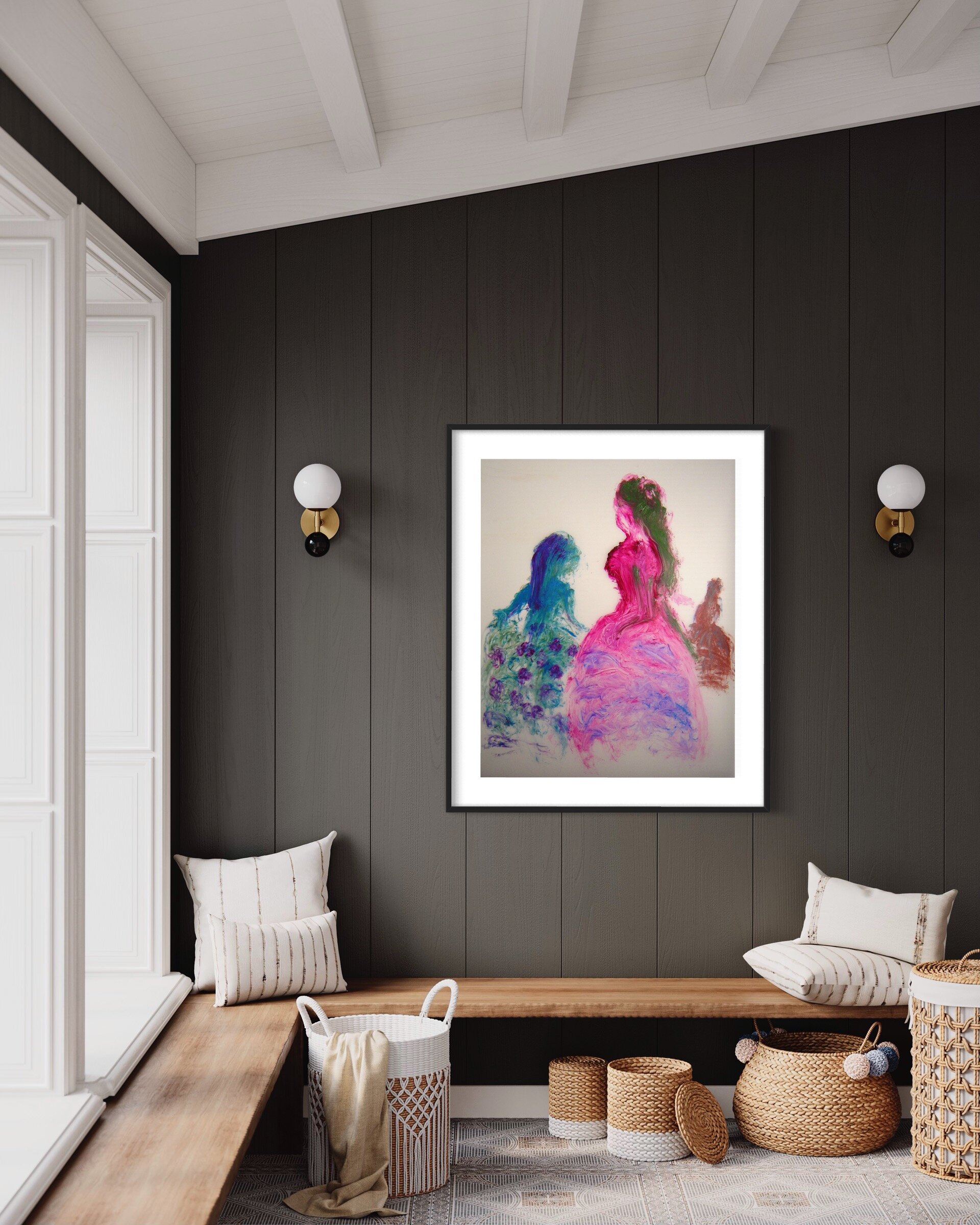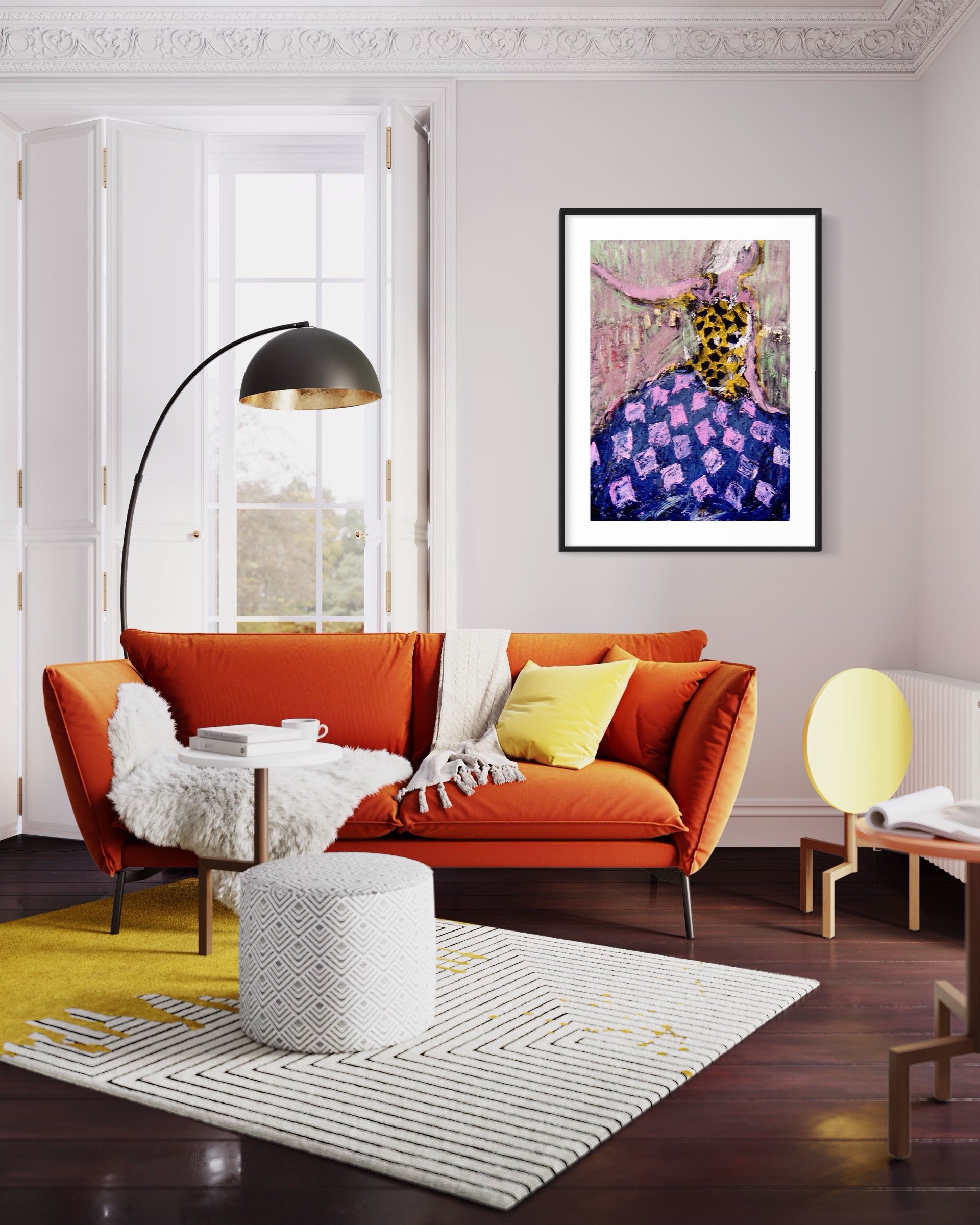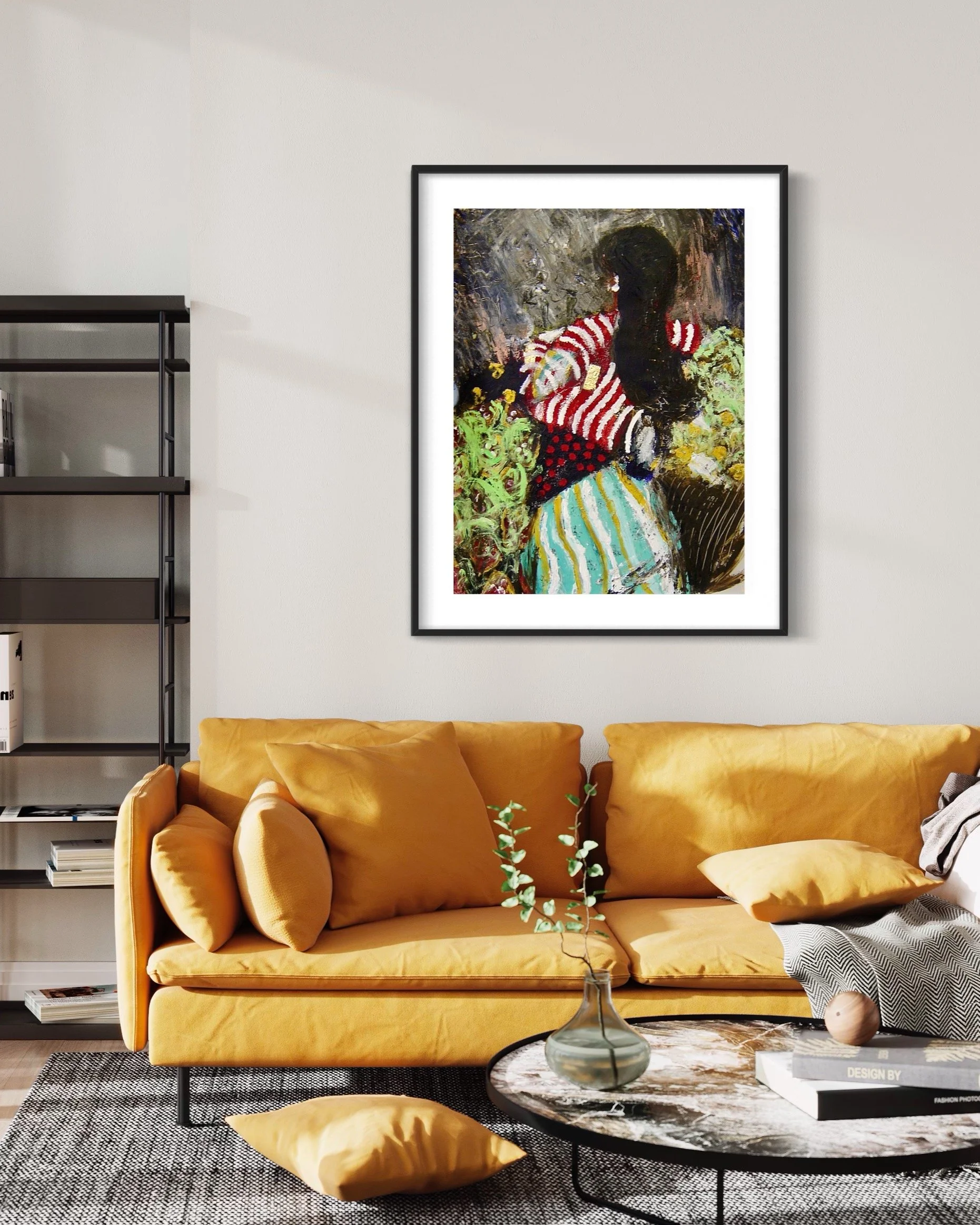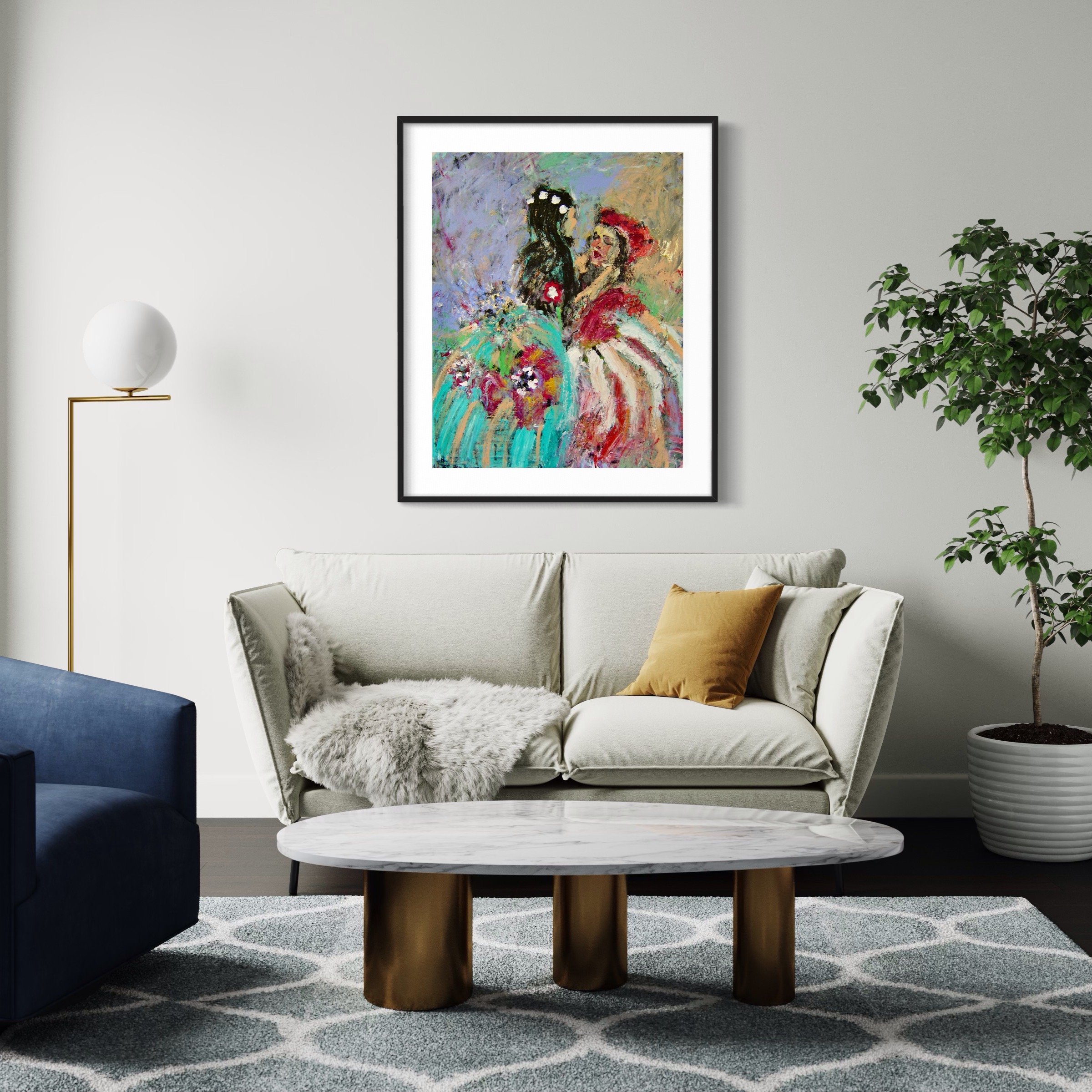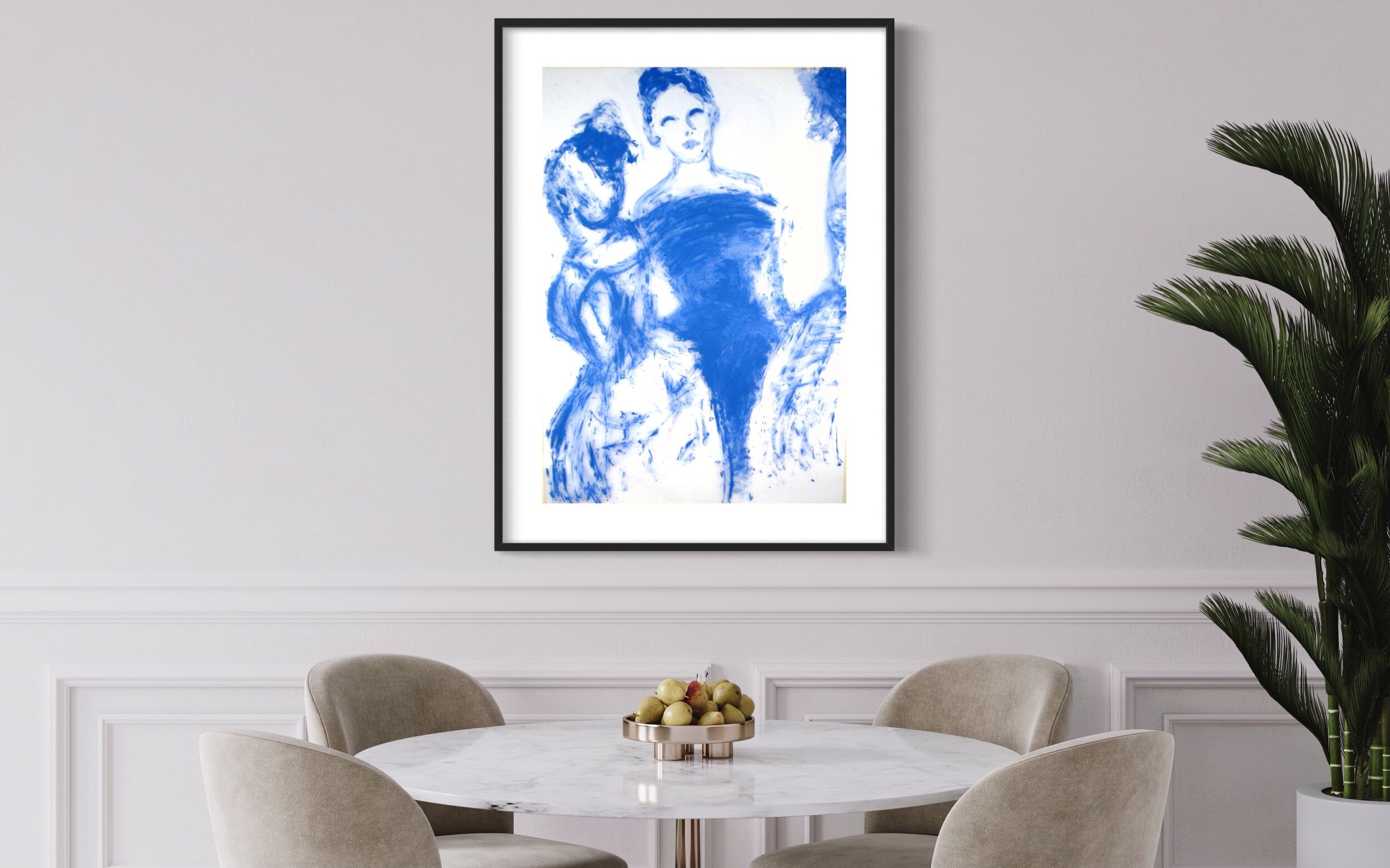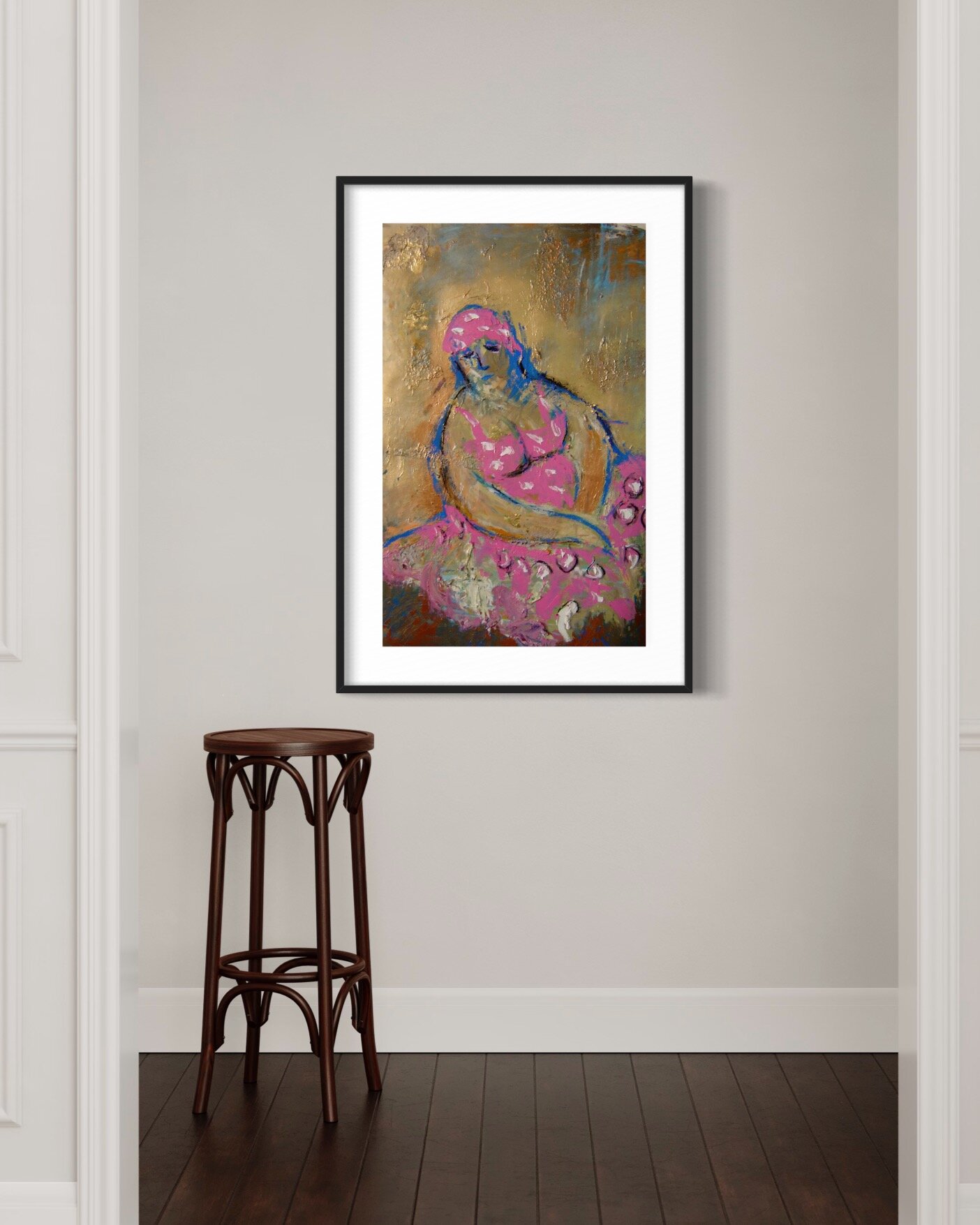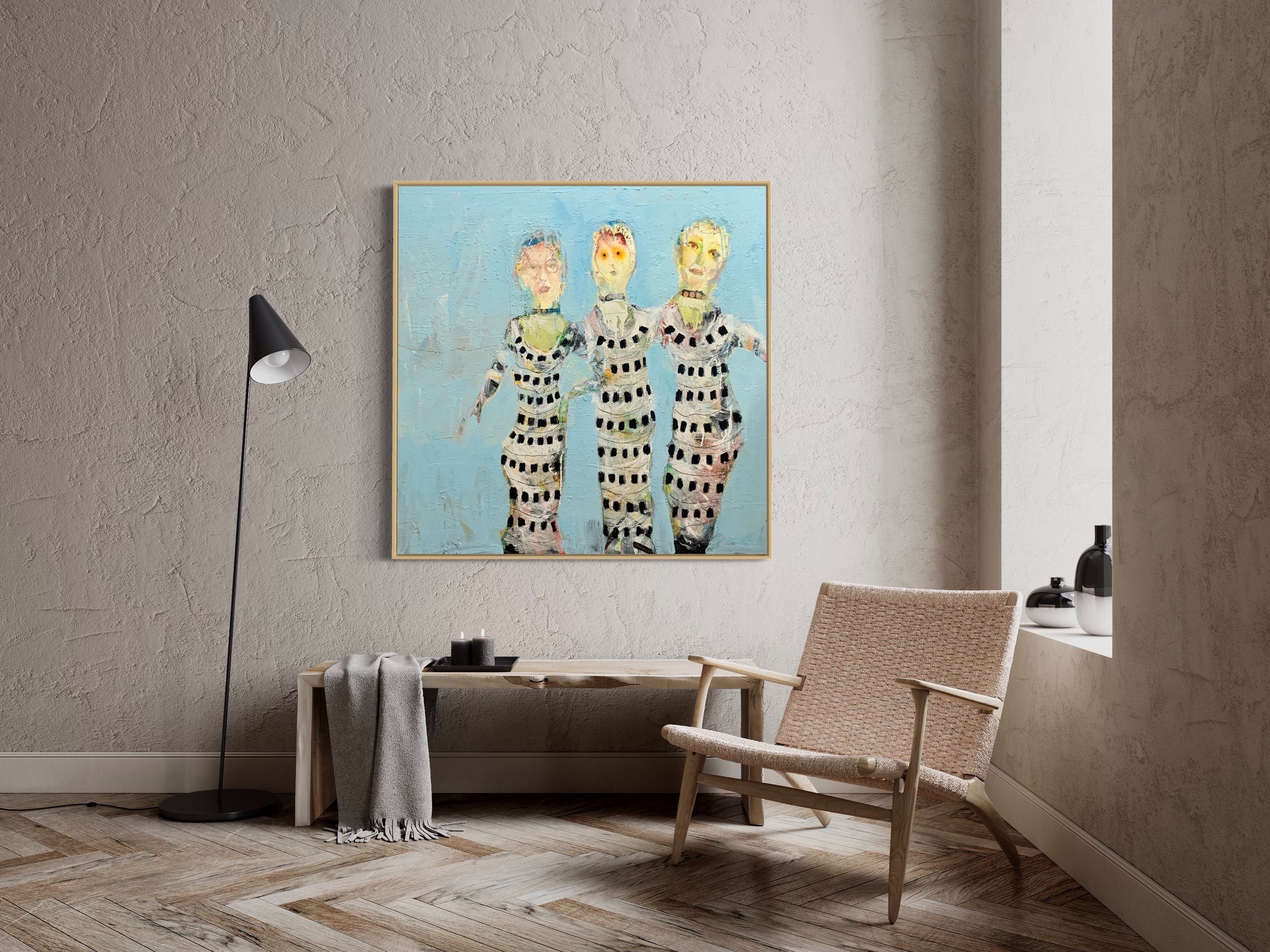It’s in the Bag
Psychological narratives around the theme of identity with the handbag at the center
Part One
Women and girls with no faces, dressed the same.
Part Two
What does one chose to hide or reveal of themselves? Is the handbag an expression of personality? Handbags contain cosmetics that create the face we reveal to the world. They also contain our wallets with our identity on our cards.
Part Three
Works inspired from interviews with women I know to determine if the handbag choice is an expression of personality. Curiously, artists did have artistic creative purses, very open chatty gals had open purses without zippers (or didn’t carry a bag!), practical professional gals had more zippers, pockets and better organized and structured bags.
A commentary on It’s in the Bag
by Jacque McCarthy
In “It’s in the Bag,” Amanda takes us into the world of women through one of their favourite fashion accessories: the handbag. While we rarely get to see the contents, the purses are almost never opened; we are left with images that evoke narratives that stop short of supplying answers. Instead, they suggest questions about the duality inherent in women’s identity and complexity of their sexuality.
These paintings taken together are both a celebration of women of all ages and a reflection of the baggage that we all carry. The playful sexuality of the youthful women is contrasted with and complemented by the confident posture and self-assured expressions of older women.
Do women use purses to express their individuality or are they part of a fashion uniform that society dictates? In some of the paintings the characters hold practical or distinctive purses in confident poses while looking directly at the viewer. In others twin figures hold the same purses to match the same outfit while standing in the same position.
Do purses reveal identity or do they conceal that which is private? Women cling to their handbags, at times with clenched fists. At other times purses are held deliberately to conceal the face. The darker side of the image is explored when the handbag seems to represent the emotional and psychological baggage that may present itself at different times and stages of our lives. Some characters seem particularly weighed down with the cumbersome heaviness of their bags. Another seems to be pondering the choice of purses, apparently unaware of their similarity, perhaps suggesting the regularity with which our ‘baggage’ confronts us in life; while it may look different, it is always the same.
Amanda moves from the general to specific both in terms of style and message. She uses a variation of painting styles and palettes to express a range of meaning, just as women choose different purses to reflect a particular mood or to accessorize the day’s ensemble. Her use of vivid, bold and brilliant colours is at once liberating and confining. The various shades of pink suggest the joyous playfulness of youth as well as restricting cultural stereotypes. Paintings in which the characters seem more comfortable exposing their bodies than showing their faces or the contents of their purses challenge the viewer and the social norms.
In the more minimalist paintings, the absence of detail seems to enhance the commonality of women’s experience. This spare composition is often used in the representation of twin figures who suggest the dichotomy inherent in our reflections: as individuals and as a gender, are we what we appear to be? As the paintings become more clearly representational, the stories seem to narrow, perhaps to illustrate that individual identity has not been completely lost to the sea of cultural expectations.























